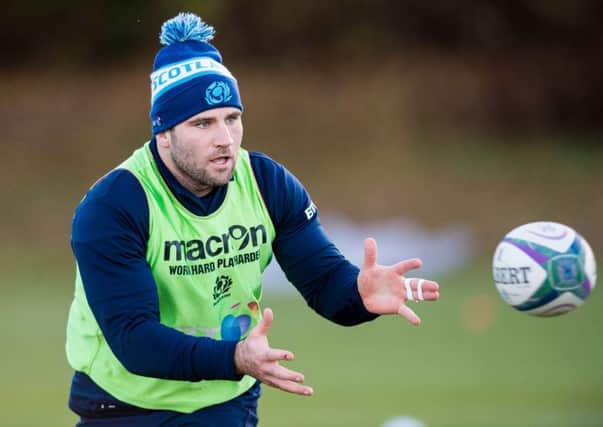Scotland hooker Fraser Brown happy to get more try-scoring chances


For a while, the traditional glory grabbers may even have been looking on enviously from the wings as the front-row workhorses plundered try after try, mainly as the finishers at the back of mauls.
The hat-trick for Tommy Seymour and one for Sean Maitland in the 54-17 rout of Fiji last weekend may have restored the wing union’s faith in the natural order, although Fraser Brown chipped in with yet another score for the No 2s club and was unlucky to have another one disallowed.
Advertisement
Hide AdAdvertisement
Hide Ad“I did see an interesting stat tweeted about how many tries hookers had scored in the last 15 Tests as opposed to something like, I think, the last 246,” said the Glasgow Warriors hooker.
“We’ve got a good maul and set-piece, which gives opportunities for hookers to score tries at the back of that because that’s the way it’s set up. We have dangerous guys all over the field and the way we play rugby creates opportunities for people to score tries.”
Brown and fellow hookers, including Stuart McInally, Ross Ford and George Turner, who bagged a hat-trick against Canada in June, have contributed 15 tries since Townsend took over from Vern Cotter. Scotland have been putting greater emphasis on the maul and it was via that route that they laid the platform against Fiji in the first half, before cutting loose in the second.
Townsend was asked about this after Saturday’s game and explained, in global terms, the view that these attritional drives to the opposition line are becoming more dominant was misleading.
“If you score tries from them, they’re great. But the number of tries scored from lineout drives has gone down recently – a few years ago there were a lot more,” said the coach.
“Teams are much better at defending them, so it’s great we’ve scored from them. We scored one against Wales, Jonny Gray was an inch short of a second – and we got a couple or more today.
“Our hookers seem to be our leading try scorers because of it, although the wingers are maybe back in front now. We know that, against certain teams, it’s going to be very difficult. South Africa’s lineout drive defence is outstanding.”
There was some frustration from the Scotland camp about how Irish referee Andrew Brace interpreted that side of the game against Fiji but Brown accepts that it is a grey area.
Advertisement
Hide AdAdvertisement
Hide Ad“There are so many things for referees and officials to try to spot. If you can get it set up and be dynamic, then it is very difficult to stop legally,” he added. “The difficulty for referees is that balance between living on the edge and trying to stop it legally. The difficulty for referees is where that balance is. I think at the weekend we could have had a penalty try at one of those mauls.
“That’s referee’s interpretation. You can sit here until you’re blue in the face. The important thing is that, when the referees have dialogues with the coaches and players after the games, that it comes across really clearly why they’ve made the decision.”
Brown, meanwhile, was asked about a Dundee University scientific study which has called for mandatory protective rugby headgear after it claimed they can cut impact levels by almost half.
The Glasgow player has spent a large chunk of time out in recent years due to concussion problems but, while admitting he had not yet read the most recent study, said he preferred not to wear a head protector and had never been recommended to try.
“The study has only just come out. I don’t know enough about it,” he said. “I don’t feel that comfortable wearing it because I don’t feel I can play properly, maybe can’t hear as well.
“That’s not a protective thing for me, it’s aesthetic and a function thing for performance. That’s a personal thing, other players might want to use it. But the study has just come out, I’ve not read it, I’ve been learning my stuff for this week.
“If there was a study that came out and said it was an enormously beneficial thing then that would be different.”
Brown said he is fully focused on Saturday’s huge physical challenge.
“South Africa is always a massive challenge up front – across the whole park to be honest,”he said.
“They are the most physical team you can play and that has to be matched from one to 23.”